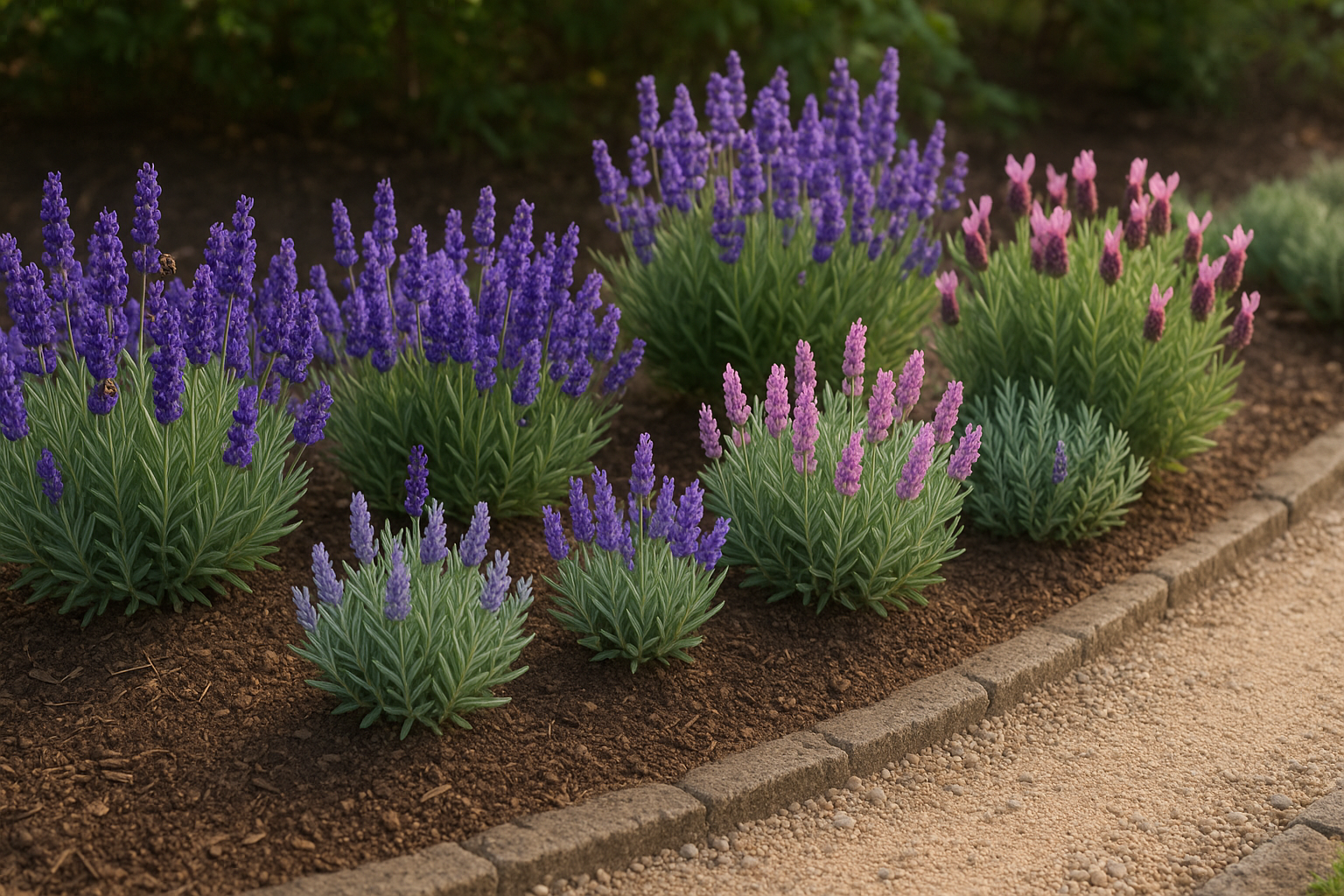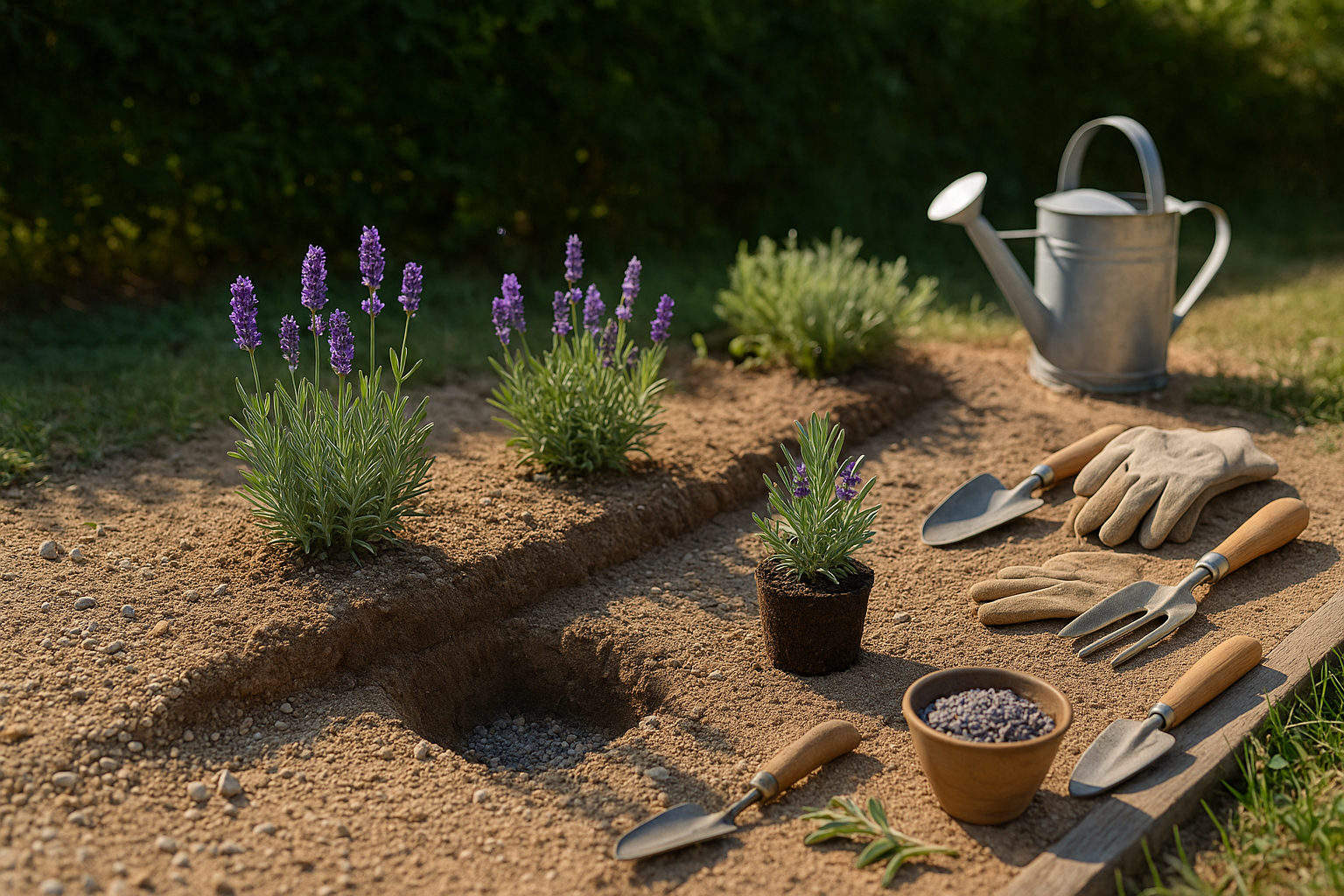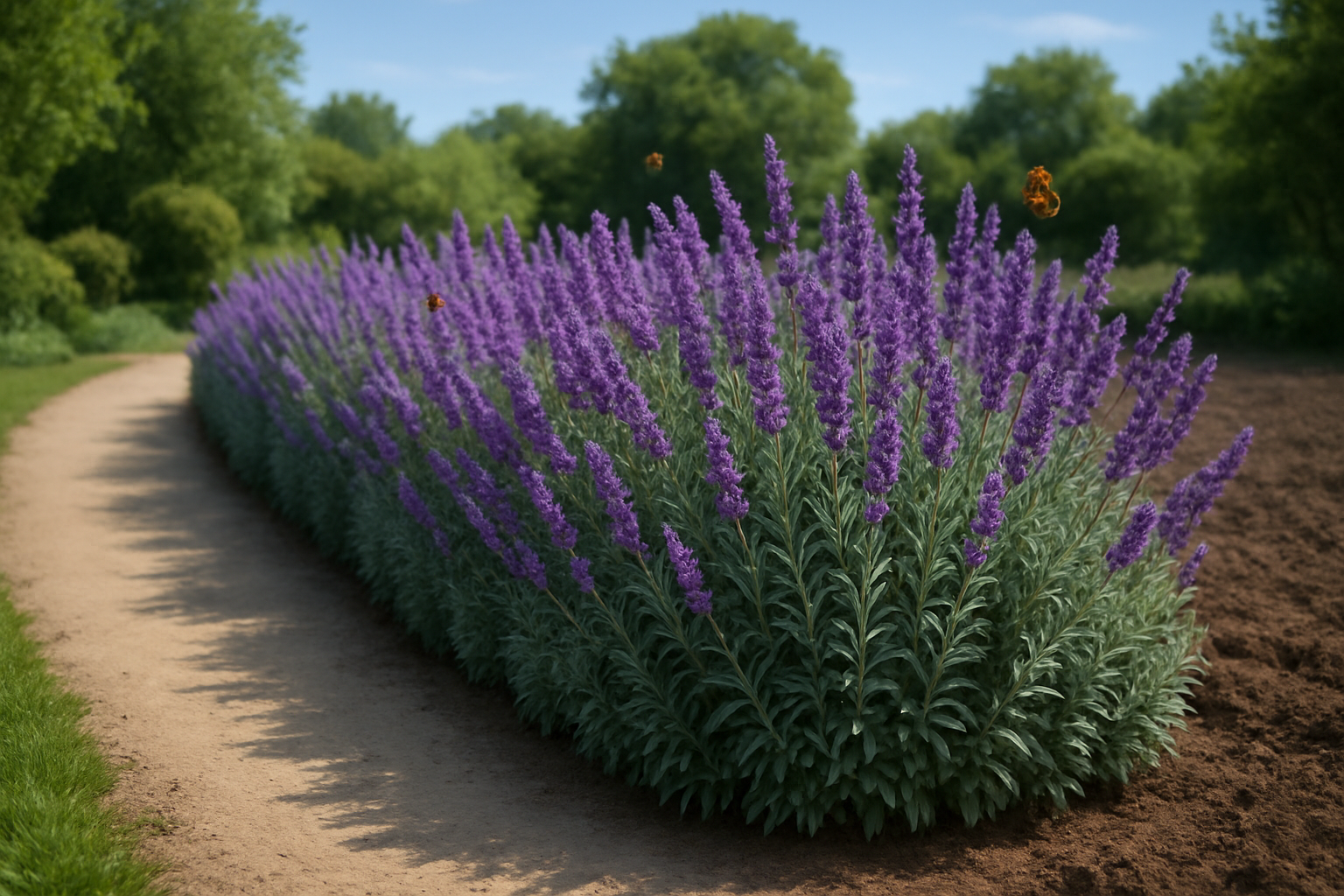Why Use Lavender as a Hedge or Border?

Lavender is a standout choice for creating garden hedges or borders thanks to its unique blend of beauty, practicality, and resilience. Its fragrant, silvery-green foliage and vibrant purple, blue, or even pink flower spikes bring sensory delight and a calming ambiance to any landscape.
The scent is not only pleasant for you but also helps deter deer and unwanted pests, while attracting beneficial pollinators such as bees and butterflies, which in turn support nearby plants. Lavender offers strong visual interest throughout the year: it begins with soft new growth in spring, bursts into a colorful perfume cloud in summer, and maintains a tidy, textured form in fall and winter once the flowers fade.
Compared to many traditional hedge plants, lavender requires minimal care—just occasional pruning and well-drained soil to thrive—making it much less demanding than many evergreen shrubs. Its exceptional drought tolerance means less time watering, ideal for busy gardeners or those in hot climates.
As a low-growing, evergreen shrub, lavender forms neat lines that stay crisp for months and pairs effortlessly with various landscape styles, from formal to cottage gardens. Popular choices for hedges include English lavender (Lavandula angustifolia) for its compact shape, ‘Hidcote’ and ‘Munstead’ for their strong color and fragrance, and lavandin hybrids like ‘Grosso’ for larger, more vigorous borders.
Lavender hedges truly provide practical elegance that sets your garden apart.
Choosing the Right Lavender Variety
When it comes to picking the ideal lavender for your garden, understanding the main types—English, French, and hybrid lavenders—can make all the difference, especially if you’re hoping to craft a neat, fragrant hedge or border.
English lavenders (Lavandula angustifolia) are hardy, compact, and well-suited to cooler climates. They’re prized for their deep purple-blue flowers, tidy growth, and resilience, making them the top choice for classic hedges. Varieties like ‘Hidcote’ and ‘Munstead’ are standout English types, beloved for their dense form and long, colorful bloom periods.
In contrast, French lavenders (Lavandula stoechas) are showier, with distinct “rabbit ear” petals, but tend to be less cold-tolerant—best reserved for warmer, Mediterranean-like climates and more decorative uses.
Hybrid lavenders (Lavandula x intermedia, often called “lavandins”), such as ‘Grosso’ and ‘Phenomenal’, strike a balance. They offer larger plants and longer flower spikes while still providing good structure, making them great for larger, more informal borders or hedges in mild regions.
When choosing lavender for edging or hedging, consider your winter temperatures—hardy English types fare better in freezes—as well as flower color preferences and the mature height you want. Compact cultivars like ‘Little Lady’ or ‘Thumbelina Leigh’ make neat, low borders, while taller hybrids work well as substantial screens.
Also, prioritize varieties noted for prolonged flowering so you’ll enjoy color and scent all summer. Read plant tags or consult local nurseries to match varieties like ‘Super Blue’ to your local climate and design goals.
Planting a Lavender Hedge – Getting Started

Starting your lavender hedge off right involves a few simple but essential steps to ensure healthy growth and a beautiful result. First, choose a spot that gets at least six to eight hours of direct sunlight daily—lavender loves warmth and plenty of light.
Next, test your soil. Lavender thrives best in well-draining, slightly alkaline soils with a pH between 6.5 and 7.5. If your soil is heavy or holds water, amend it with sand or coarse gravel to improve drainage, since soggy roots can quickly cause root rot.
Once your site is prepared, plan to plant lavender in the spring after the last frost and when the soil has warmed. For a full, lush hedge, space each plant about 12 to 18 inches apart, depending on the mature size of your lavender variety. Compact types work better for tight hedges, while larger varieties create a breezier, informal look.
Lay out the plants in a straight line or gently curved row, then step back to check the alignment before digging. When planting, dig a hole just deep enough for the root ball, and add a small handful of grit or gravel at the bottom for extra drainage. After placing the lavender, backfill the hole, gently firm the soil, and soak each plant thoroughly to help roots settle.
Avoid overwatering—lavender prefers to dry out between waterings, so only water again when the soil feels dry to the touch. A little care during this stage will give your lavender hedge the best chance to flourish for years to come.
Pruning and Shaping for a Neat Hedge
Pruning is essential to keep lavender hedges looking dense, healthy, and beautifully shaped. The best time to prune is just after the main flush of flowering, typically in late summer. Avoid cutting in late fall, as new growth may be damaged by winter cold.
For dense, bushy growth, use sharp, clean hand pruners or small hedge shears to trim back the soft green stems by about one-third, always staying above the woody base. Shaping your lavender hedge is easiest when plants are young—simply snip into gentle, rounded mounds that help sunlight reach all parts of the plant and promote even growth.
If you’re working with an existing hedge, maintain this shape each year with light, regular trims, never letting growth become straggly or uneven. Prune at least once annually, but for the tidiest results in long growing seasons, consider a light spring trim as well as the major summer cut.
A common mistake is cutting into old, leafless wood; this rarely resprouts and can leave unsightly gaps. Similarly, skipping a yearly prune leads to tall, woody, and open plants that are hard to recover.
To avoid these issues, use gentle, consistent pruning, and always ensure your tools are clean to prevent disease. With a little attention, your lavender will reward you with a lush, fragrant hedge that’s both striking and easy to maintain.
Caring for Your Lavender Border Year-Round
Keeping your lavender border in top shape all year doesn’t have to be complicated, but it does require some routine attention. Water your lavender deeply but infrequently, allowing the soil to dry out between waterings—these plants love heat and hate soggy roots.
In early spring, add a light mulch of gravel or sand to enhance drainage and keep weeds down; avoid rich composts or bark, as they can retain moisture. Feed sparingly, if at all—too much fertilizer leads to leafy growth at the expense of flowers.
For pest control, watch for aphids and spittlebugs; knocking them off with a strong spray of water is usually enough. Deadheading is important to keep your border neat and encourage more blooms: once flowers start to fade and dry, cut the stems back to just above a set of leaves, using clean, sharp scissors or pruners. This simple step helps prevent the plant from putting energy into setting seed.
If you notice poor flowering, check that your lavender is getting at least six hours of direct sun and that you haven’t over-fertilized. Leggy, floppy growth often signals that plants need more sunlight or a rejuvenating trim—prune by one-third in late summer, but never cut into the woody base.
For winter, protect lavender in colder climates by brushing away wet leaves and covering the plants with a frost cloth or a mulch of straw; avoid plastic covers, which trap moisture and can lead to rot.
With these simple habits, your lavender border should thrive year-round, filling your garden with color and scent.
Creative Lavender Border Ideas
Looking to give your garden borders a fresh yet timeless touch? Lavender is perfect for both straight and curved border designs, offering structure along with a soothing fragrance.
For a classic approach, line paths or flower beds with tightly planted lavender hedges—their silvery leaves and purple blooms create a crisp, elegant edge in both formal and cottage-style gardens.
If you prefer a softer, more informal look, weave your lavender among plants like yellow coreopsis, pink roses, or silver-foliaged plants like Artemisia. This combination will make the lavender’s color pop and add year-round interest.
Lavender also thrives in mixed Mediterranean borders alongside herbs like rosemary and thyme, complementing rock gardens or modern, minimalist landscapes.
For a creative twist, try alternating small lavender clusters with low ornamental grasses to add movement and textural contrast along a curved patio edge.
Beyond the garden, snip fresh lavender stalks to craft fragrant sachets for closets and drawers, or bundle stems for homemade wreaths—perfect for welcoming guests with a calming scent.
With its versatility and many uses, lavender lets you experiment freely, whether your style is structured, sprawling, or somewhere in between.
